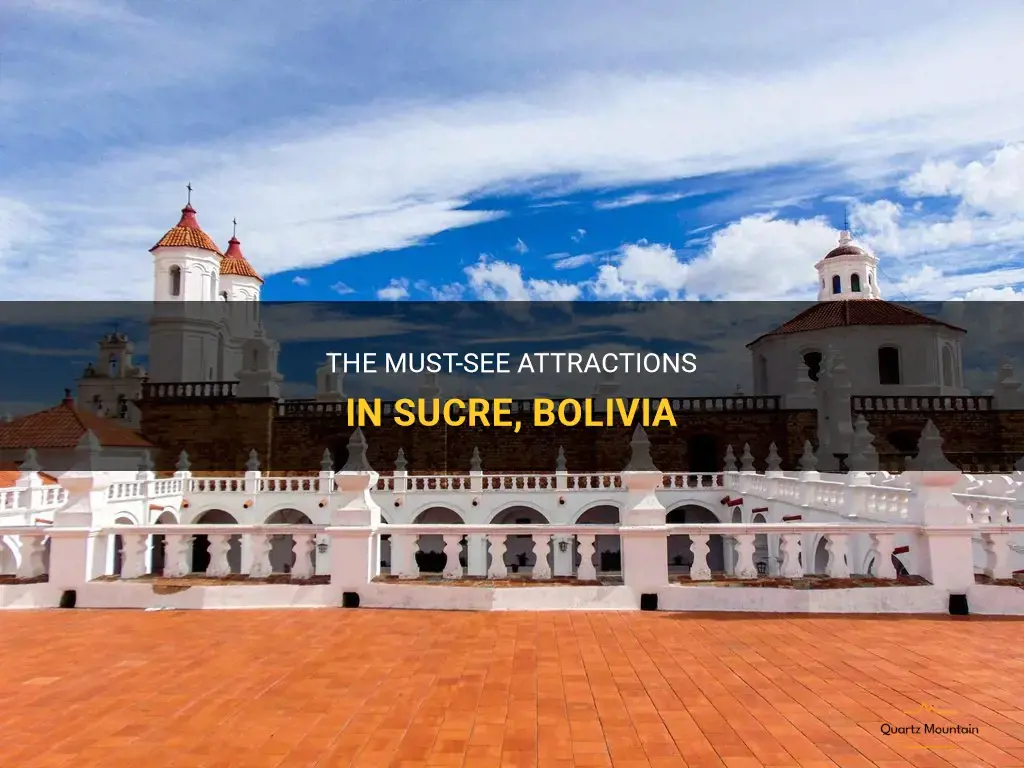
Sucre, the constitutional capital of Bolivia, is a charming city full of rich history, stunning colonial architecture, and vibrant culture. From picturesque plazas and majestic churches to intriguing museums and ancient ruins, Sucre offers a treasure trove of must-see attractions for visitors from around the world. Whether you are a history buff, an art enthusiast, or simply someone looking to immerse themselves in the beauty of Bolivia, Sucre has something for everyone. Join us on a virtual journey through the must-see attractions in Sucre and discover the wonders that await you in this captivating city.
| Things to do in Sucre, Bolivia | |
|---|---|
| 1 | Explore the historic city center |
| 2 | Visit the Sucre Cathedral |
| 3 | Learn about Bolivian history at the Casa de la Libertad museum |
| 4 | Take a tour of the Tarabuco Market |
| 5 | Visit the Bolivian Textile Museum |
| 6 | Explore the Dinosaur Park |
| 7 | Take a walking tour of Recoleta |
| 8 | Visit the San Felipe Neri Convent |
| 9 | Enjoy panoramic views from the Mirador de la Recoleta |
| 10 | Learn about indigenous culture at the Indigenous Art Museum |
What You'll Learn

Casa de la Libertad (House of Freedom)
_20230626074351.webp)
| Characteristic | Description |
|---|---|
| Name | Freedom House |
| Type | National museum in Sucre, Bolivia |
| Website | Go to website |
| Rating / Review count | 4.7 / 1,915 |
| Address | Pl. 25 de Mayo, Sucre, Bolivia |
| Phone | +591 4 6454200 |
| Hours | Sunday - 9 AM–1 PM Monday - 8:30 AM–12:30 PM, 2:30–6:30 PM Tuesday - 8:30 AM–12:30 PM, 2:30–6:30 PM Wednesday - 8:30 AM–12:30 PM, 2:30–6:30 PM Thursday - 8:30 AM–12:30 PM, 2:30–6:30 PM Friday - 8:30 AM–12:30 PM, 2:30–6:30 PM Saturday - 9 AM–1 PM |
| Profiles |   |
Casa de la Libertad, also known as the House of Freedom, is a historically significant building located in Sucre, Bolivia. This building is a symbol of Bolivia's struggle for independence and serves as an important cultural and historical site in the country.
The Casa de la Libertad is not just any ordinary building. It holds great significance as it was the site where Bolivia's declaration of independence was signed on August 6, 1825. This declaration marked the end of Spanish colonial rule and the birth of an independent nation. Therefore, the Casa de la Libertad is often referred to as the place where Bolivia was born.
The architecture of the Casa de la Libertad is a blend of neoclassical and Baroque styles. It features long hallways, spacious rooms, and ornate detailing that reflect the grandeur of the time. The building itself is quite expansive, covering an area of over 3,000 square meters.
Inside the Casa de la Libertad, visitors can explore various rooms that have been preserved to showcase Bolivia's history. One of the most notable rooms is the Sala de la Independencia (Hall of Independence), where the signing of the declaration took place. This room is filled with artifacts and historical items that transport visitors back to that important moment in Bolivia's history.
In addition to the Hall of Independence, the Casa de la Libertad also houses a museum that displays a collection of historical documents, artwork, and other artifacts related to Bolivia's independence. Visitors can learn more about the individuals who played a significant role in shaping the country's independence and explore the evolution of Bolivia as a nation.
The location of the Casa de la Libertad is also quite significant, as it is situated in Sucre's historic center, which has been recognized as a UNESCO World Heritage site. Surrounded by beautiful architecture and charming cobblestone streets, visitors can immerse themselves in the rich history and culture of Bolivia as they explore the area.
Overall, the Casa de la Libertad is a must-visit destination for anyone interested in Bolivia's history and culture. It serves as a reminder of the struggles and sacrifices made by the people for their freedom and independence. Whether you are a history buff or simply curious about Bolivia's past, a visit to the Casa de la Libertad will provide a deeper understanding of the country's heritage and its journey towards becoming the Bolivia we know today.
12 Fun Things to Do in Dunnellon, FL
You may want to see also

Sucre Cathedral
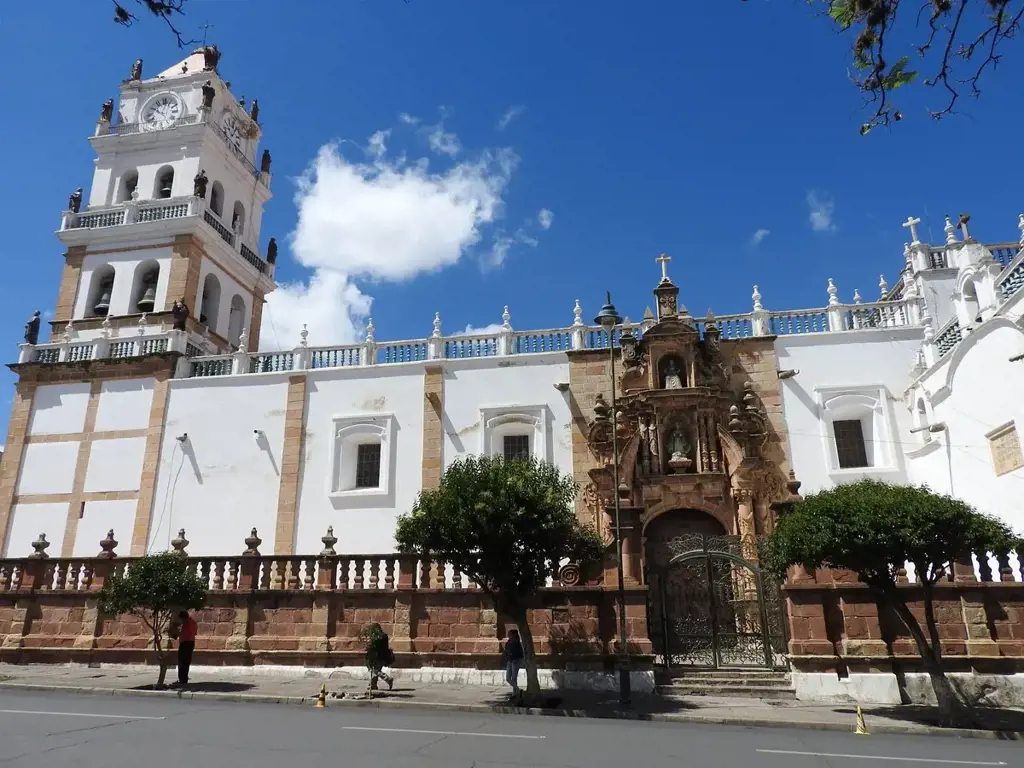
| Characteristic | Description |
|---|---|
| Name | Cathedral Basilica of Our Lady of Guadalupe |
| Type | Cathedral in Sucre, Bolivia |
| Website | Go to website |
| Rating / Review count | 4.6 / 261 |
| Address | Pl. 25 de Mayo esquina, Sucre, Bolivia |
| Hours | Sunday - 8 AM–12 PM Monday - Closed Tuesday - Closed Wednesday - Closed Thursday - Closed Friday - Closed Saturday - Closed |
The construction of the Sucre Cathedral began in 1551 and was completed in 1712. It is considered one of the oldest cathedrals in Bolivia and is known for its Baroque style of architecture. The facade of the cathedral is made of white stone, giving it a majestic and elegant appearance.
Inside the cathedral, visitors are greeted with a grand interior adorned with colorful frescoes, intricate wood carvings, and ornate altarpieces. The main altar is particularly impressive, featuring a stunning depiction of the Virgin Mary surrounded by angels.
One of the highlights of the Sucre Cathedral is the Chapel of Our Lady of Guadalupe, which houses a revered statue of the Virgin Mary. This chapel is a popular pilgrimage site for both locals and tourists, especially during religious festivities.
The cathedral also houses a museum that displays a collection of religious art, including paintings, sculptures, and precious ornaments. The museum offers visitors a glimpse into the rich religious history of Sucre and provides insight into the cultural heritage of Bolivia.
The Sucre Cathedral is not only a place of worship but also a significant cultural and historical landmark. It has witnessed many important events in Bolivia's history, including the signing of the country's declaration of independence in 1825.
Today, the Sucre Cathedral continues to be an active place of worship, hosting regular religious ceremonies and services. It is also a popular tourist attraction, drawing visitors with its stunning architecture, religious artifacts, and serene atmosphere.
A visit to Sucre would not be complete without exploring the Sucre Cathedral. Its beauty, history, and cultural significance make it a true gem of Bolivia. Whether you are a religious devotee or simply appreciate architectural wonders, the Sucre Cathedral is a must-see destination that should not be missed.
12 Adventurous Things to Do in Raleigh NC
You may want to see also

Plaza 25 de Mayo
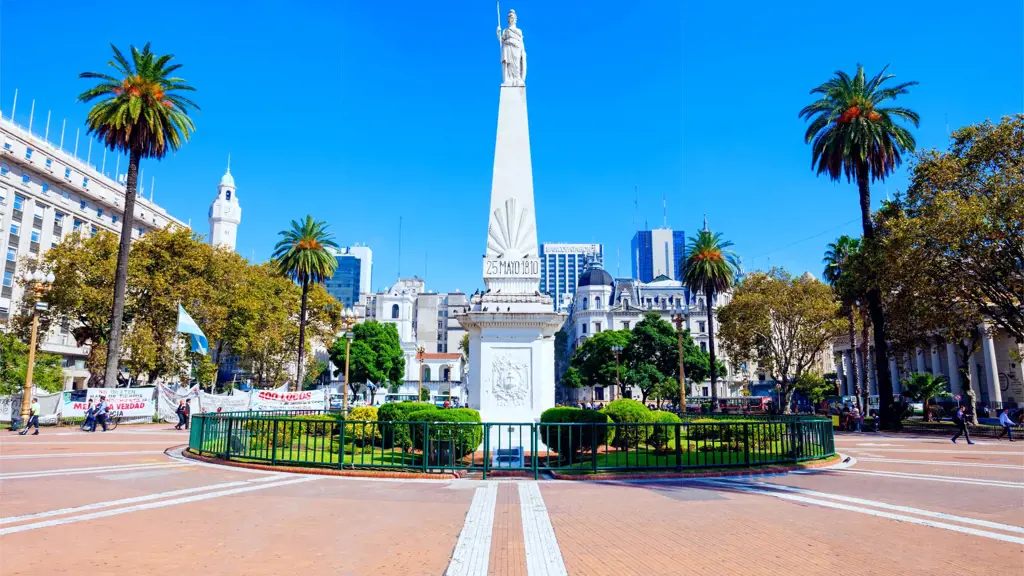
Located in the heart of the city of Sucre, Bolivia, Plaza 25 de Mayo is a historic square that holds significant cultural and historical importance. Named in honor of the date of Bolivia's independence from Spanish rule, this plaza is a popular gathering place for locals and tourists alike.
Another notable building surrounding the plaza is the Metropolitan Cathedral of Sucre. Admired for its stunning white façade and intricate interior, this cathedral is an important religious site and a symbol of Sucre's deep-rooted Catholic heritage. Visitors can explore the cathedral and even climb up to its bell tower for a panoramic view of the city.
Visitors to Plaza 25 de Mayo can also enjoy the lush greenery and beautiful fountains that adorn the square. There are benches where one can sit and relax, taking in the serene atmosphere of the plaza. Street vendors can be found selling snacks and local crafts, adding to the vibrant ambiance of the square.
In addition to its historical and architectural significance, Plaza 25 de Mayo is also a focal point for local events and celebrations. Throughout the year, the plaza plays host to cultural festivals, music performances, and even political gatherings. During such events, the plaza comes alive with colorful decorations, lively music, and an infectious sense of energy.
Whether you are a history enthusiast, a culture lover, or simply someone who enjoys the beauty of a city square, Plaza 25 de Mayo in Sucre, Bolivia is a must-visit destination. Its rich history, stunning architecture, and vibrant atmosphere make it a true gem in the heart of Sucre. So, make sure to add Plaza 25 de Mayo to your itinerary when you visit Sucre, and immerse yourself in the beauty and culture of this fascinating city.
14 Fun Things to Do in Oceanside, Oregon
You may want to see also

Parque Cretácico (Dinosaur Park)
_20230626074539.webp)
| Characteristic | Description |
|---|---|
| Name | Parque Cretácico |
| Type | National museum in Sucre, Bolivia |
| Website | Go to website |
| Rating / Review count | 4.3 / 3,055 |
| Address | Carretera Cochabamba km 5, Sucre, Bolivia |
| Phone | +591 4 6457392 |
| Hours | Sunday - 9 AM–5 PM Monday - Closed Tuesday - 9 AM–5 PM Wednesday - 9 AM–5 PM Thursday - 9 AM–5 PM Friday - 9 AM–5 PM Saturday - 9 AM–5 PM |
Located just outside the city of Sucre, Bolivia, is a fascinating attraction known as the Parque Cretácico or Dinosaur Park. This unique park is a must-visit destination for anyone interested in paleontology and the history of these magnificent creatures that once roamed the Earth.
The Parque Cretácico is home to an impressive collection of dinosaur footprints that date back over 65 million years to the Cretaceous period. These footprints, which are remarkably well-preserved, were discovered in the nearby Cal Orko limestone quarry in the early 1990s. Today, visitors to the park can see over 5,000 dinosaur footprints, making it one of the largest collections in the world.
One of the highlights of the park is the Cretaceous Wall, a vertical cliff where many of the footprints are located. This wall stretches for over 1.5 kilometers and reaches heights of up to 80 meters, providing visitors with a unique opportunity to see these ancient footprints up close. The footprints belong to various dinosaur species, including theropods, sauropods, and ornithopods, giving researchers valuable insights into the behavior and movement patterns of these creatures.
In addition to the Cretaceous Wall, the Parque Cretácico also features a museum that houses a variety of dinosaur fossils and replicas. Visitors can learn about the different dinosaur species that inhabited the region millions of years ago and explore interactive exhibits that bring these ancient creatures to life. One of the most impressive displays is a life-size replica of a Tyrannosaurus rex, allowing visitors to get a sense of the immense size and power of these prehistoric predators.
For those looking for a more immersive experience, the park offers guided tours that take visitors on a journey through the history of the dinosaurs. Knowledgeable guides provide insightful information about the footprints and offer a deeper understanding of the significance of this site. The tours also give visitors the opportunity to witness ongoing excavations, as new footprints are still being uncovered.
The Parque Cretácico is not just a place for education and research, but also a beautiful natural attraction. Surrounded by stunning landscapes and rolling hills, the park offers breathtaking views that add to the overall experience. Visitors can take leisurely walks along the trails that wind through the site, allowing them to appreciate the beauty of the area while marveling at the incredible evidence of prehistoric life.
In conclusion, the Parque Cretácico in Sucre, Bolivia, is a one-of-a-kind destination that offers a remarkable window into the world of dinosaurs. The collection of footprints found within the park provides valuable insights into the lives of these ancient creatures, while the museum and guided tours offer educational and immersive experiences. Whether you are a paleontology enthusiast or simply curious about the history of our planet, a visit to the Parque Cretácico is an unforgettable experience.
13 Free Things to Do in Charlottesville: Explore the City without Spending a Dime!
You may want to see also

Recoleta Mirador
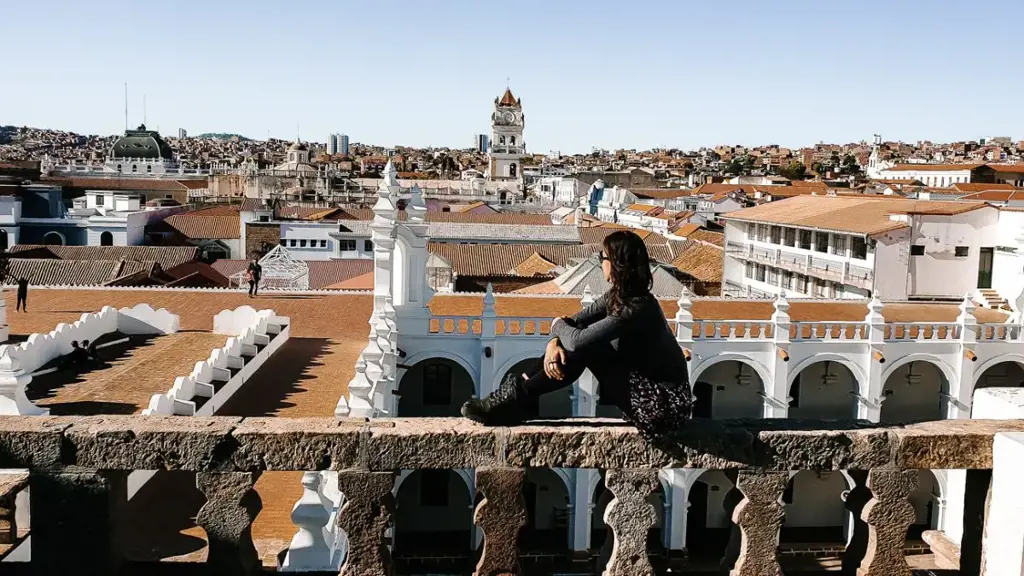
| Characteristic | Description |
|---|---|
| Name | Monasterio de La Recoleta |
| Type | Church in Sucre, Bolivia |
| Rating / Review count | 4.5 / 270 |
| Address | Dalence 719, Sucre, Bolivia |
| Hours | Sunday - 1–5 PM Monday - 9–11:30 AM, 2:30–4:30 PM Tuesday - 9–11:30 AM, 2:30–4:30 PM Wednesday - 9–11:30 AM, 2:30–4:30 PM Thursday - 9–11:30 AM, 2:30–4:30 PM Friday - 9–11:30 AM, 2:30–4:30 PM Saturday - 1–5 PM |
Located in the heart of the city of Sucre, Bolivia, the Recoleta Mirador is a must-visit destination for tourists and locals alike. This enchanting spot offers breathtaking views of the city and surrounding landscapes, making it a perfect place to take in the beauty of Sucre.
Situated atop a hill, Recoleta Mirador offers panoramic views of Sucre's picturesque white buildings and red-tiled roofs. The vantage point provides visitors with a unique perspective of the city, allowing them to truly appreciate its architectural charm and colonial heritage.
To reach the Recoleta Mirador, visitors can either take a leisurely walk or choose to ride the cable car that runs up to the hill. This cable car ride in itself is an exciting experience, as it offers a bird's-eye view of the city and its surroundings.
Once at the top, there is a small chapel that houses a collection of religious art and artifacts. The chapel holds historical significance as it was built by the Franciscan monks in the 16th century. The peaceful ambiance of the chapel adds to the overall charm of the Recoleta Mirador.
After exploring the chapel, visitors can wander through the well-kept gardens surrounding the area. These gardens are adorned with beautiful flowers and offer several benches where one can sit and enjoy the stunning views. It is an ideal spot for a picnic or simply to relax and soak in the tranquil atmosphere.
For those interested in learning more about the history and culture of Sucre, there is a small museum adjacent to the chapel. The museum exhibits various artifacts and displays that provide insight into the city's past. It is a great opportunity to delve deeper into the rich heritage of Sucre.
In addition to its cultural and historical significance, Recoleta Mirador also serves as a popular spot for photography enthusiasts. The stunning views and unique vantage point offer countless opportunities to capture the beauty of Sucre through the lens of a camera.
Whether you are a history buff, nature lover, or simply someone seeking a peaceful escape, the Recoleta Mirador in Sucre, Bolivia, is a destination that is sure to captivate your senses. With its breathtaking views, tranquil ambiance, and historical significance, it is a place that should not be missed when exploring the beautiful city of Sucre.
13 Exciting Activities to Experience in Walled Lake, MI
You may want to see also

Convento de San Felipe Neri
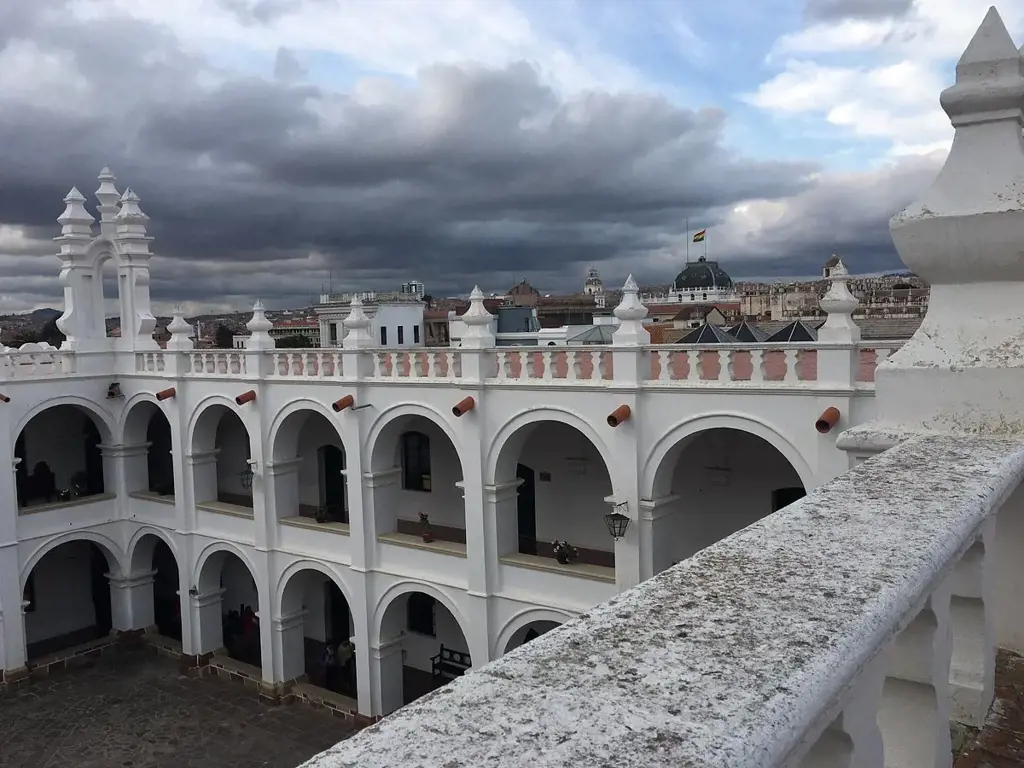
| Characteristic | Description |
|---|---|
| Name | Iglesia de San Felipe Neri |
| Type | Catholic church in Sucre, Bolivia |
| Website | Go to website |
| Rating / Review count | 4.7 / 596 |
| Address | WPXQ+WJR, Nicolas Ortiz 165, Sucre, Bolivia |
| Phone | +591 4 6454333 |
| Hours | Sunday - Closed Monday - 3–6 PM Tuesday - 3–6 PM Wednesday - 3–6 PM Thursday - 3–6 PM Friday - 3–6 PM Saturday - 9 AM–6 PM |
Located in the heart of Sucre, Bolivia, the Convento de San Felipe Neri is a stunning architectural marvel and an important religious site in the country. With its rich history and beautiful design, it has become a must-visit destination for tourists and locals alike.
The Convento de San Felipe Neri was founded in the year 1685 and has since served as a home for the congregation of the Oratorian Fathers. The building itself is a testament to the baroque style of architecture, characterized by its intricate facades and elaborate decorations. The convent is a perfect example of the Spanish influence in Bolivia and the country's rich colonial past.
As visitors step into the convent, they are immediately greeted by the grandeur of its interior. The main church, with its impressive altar and beautiful ceiling frescoes, is a sight to behold. The convent also houses numerous chapels, each dedicated to a different saint or religious figure. The stunning artwork adorning the walls and ceilings of these chapels further adds to the beauty of the space.
In addition to its architectural beauty, the Convento de San Felipe Neri also holds great historical significance. It played a vital role in the country's fight for independence against Spanish rule. It was in this very convent that the Declaration of Independence of Bolivia was signed on August 6, 1825. Today, visitors can see a replica of this important document, which serves as a reminder of Bolivia's struggle for freedom.
Tourists and locals visiting the Convento de San Felipe Neri can also explore its vast library, which houses an extensive collection of religious texts and historical documents. The convent's library is known for its impressive collection of rare books and manuscripts, making it a favorite spot for researchers and history enthusiasts.
Furthermore, the convent offers guided tours, allowing visitors to learn more about its history and significance. Knowledgeable guides provide insights into the different architectural styles and religious practices that shaped the convent over the years. Visitors also have the opportunity to witness the daily life of the monks who reside within the convent and gain a deeper understanding of their spiritual routines.
The Convento de San Felipe Neri is not only an architectural masterpiece but also a significant historical landmark in Sucre, Bolivia. Its rich history, stunning design, and religious importance make it a must-visit destination for anyone interested in history and culture. A visit to this convent is an opportunity to step back in time and immerse oneself in the colonial history of Bolivia.
11 Fun Things to Do Near Miami International Airport
You may want to see also

Tarabuco Market (Sunday's only)
_20230626074807.webp)
Located just 65 kilometers from Sucre, the Tarabuco Market is a must-visit destination for anyone traveling to Bolivia. This vibrant market takes place every Sunday and offers visitors a unique opportunity to immerse themselves in the local culture and experience the rich traditions of the indigenous Quechua people.
The Tarabuco Market is known for its colorful display of traditional textiles, clothing, and handicrafts. Local artisans gather at the market to sell their beautifully crafted goods, including intricate weavings, ponchos, hats, and tapestries. The textiles are often adorned with intricate designs and reflect the Andean culture and heritage. Many of the items sold at the market are made using traditional techniques that have been passed down through generations, making them truly special and unique.
In addition to textiles, the market also offers a wide variety of fresh produce, including fruits, vegetables, and herbs. Visitors can sample the local cuisine and purchase traditional Bolivian dishes such as empanadas and tamales. The market is also a great place to try refreshing fruit juices and local delicacies.
Beyond the shopping and culinary delights, the Tarabuco Market is also a hub for cultural exchange. Visitors have the opportunity to interact with the locals, watch traditional dance performances, and even participate in workshops to learn more about the indigenous crafts and traditions. This immersive experience allows travelers to gain a deeper understanding of the local culture and the importance of preserving these age-old traditions.
Getting to Tarabuco Market from Sucre is relatively easy. There are several options for transportation, including public buses, taxis, or organized tours. The journey takes around two hours, and the picturesque route offers stunning views of the Andean landscapes.
It is important to note that the market is only open on Sundays, so planning your visit accordingly is essential. The best time to explore the market is in the morning, as it can get crowded later in the day. It is recommended to arrive early to make the most of your time and avoid missing out on any of the unique offerings.
Visiting the Tarabuco Market is an incredible experience that should not be missed during a trip to Sucre, Bolivia. From the vibrant textiles to the delicious local food and the warm hospitality of the Quechua people, this market truly showcases the rich cultural heritage of the region. So, be sure to mark your calendar and make a visit to Tarabuco Market on a Sunday to immerse yourself in the vibrant traditions of Bolivia.
11 Fun & Free Activities to Enjoy in Cancun
You may want to see also

Mirador La Recoleta
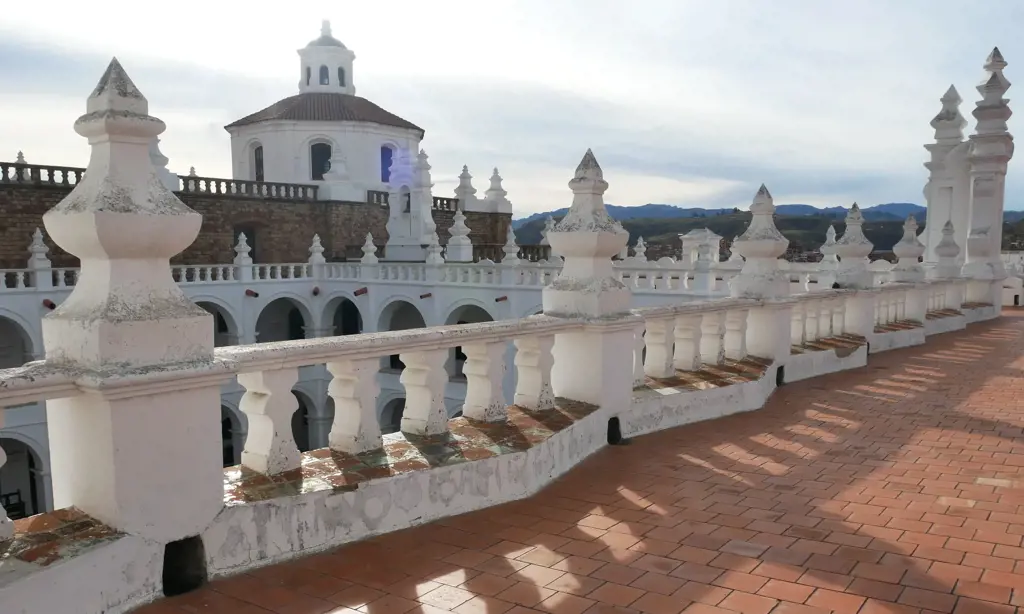
| Characteristic | Description |
|---|---|
| Name | Mirador de La Recoleta |
| Type | Monument in Sucre, Bolivia |
Located in the beautiful city of Sucre, Bolivia, Mirador La Recoleta is a popular tourist attraction that offers stunning panoramic views of the city and its surroundings. Perched on a hilltop, this viewpoint provides visitors with a unique perspective of Sucre's colonial architecture, rolling hills, and picturesque landscapes.
To reach Mirador La Recoleta, visitors can take a short walk from the city center. As they ascend the hill, they will be greeted by well-maintained gardens and a peaceful atmosphere. Once at the top, they will be rewarded with breathtaking views that are sure to leave a lasting impression.
The main attraction at Mirador La Recoleta is its stunning viewpoint, which offers uninterrupted views of Sucre and its surrounding mountains. Visitors can gaze upon the city's red-tile roofs, historic churches, and charming streets from this elevated vantage point. The view is especially spectacular at sunrise or sunset when the sky is painted in vibrant hues, casting a golden glow on the city below.
Aside from the incredible views, Mirador La Recoleta also boasts a small museum that showcases artifacts and artworks from the region's rich history. Visitors can learn about the indigenous cultures that have shaped Bolivia and gain a deeper understanding of Sucre's cultural heritage. The museum provides an informative and educational experience for travelers interested in Bolivian history and culture.
After exploring the museum, visitors can relax and enjoy a cup of local Bolivian coffee at the onsite café. This quaint café offers a tranquil setting where visitors can sit back, savor the flavors of Bolivia, and soak in the stunning views from the terrace. It's the perfect spot to unwind after a day of exploring Sucre.
In conclusion, a visit to Mirador La Recoleta is a must for anyone traveling to Sucre, Bolivia. This viewpoint offers awe-inspiring views of the city and its surroundings, along with the opportunity to learn about the region's rich history. Whether you're a history buff, a nature enthusiast, or simply someone who appreciates natural beauty, Mirador La Recoleta is sure to captivate your senses and leave a lasting impression.
13 inventive tricks to explore with lighters
You may want to see also

Textile Museum ASUR
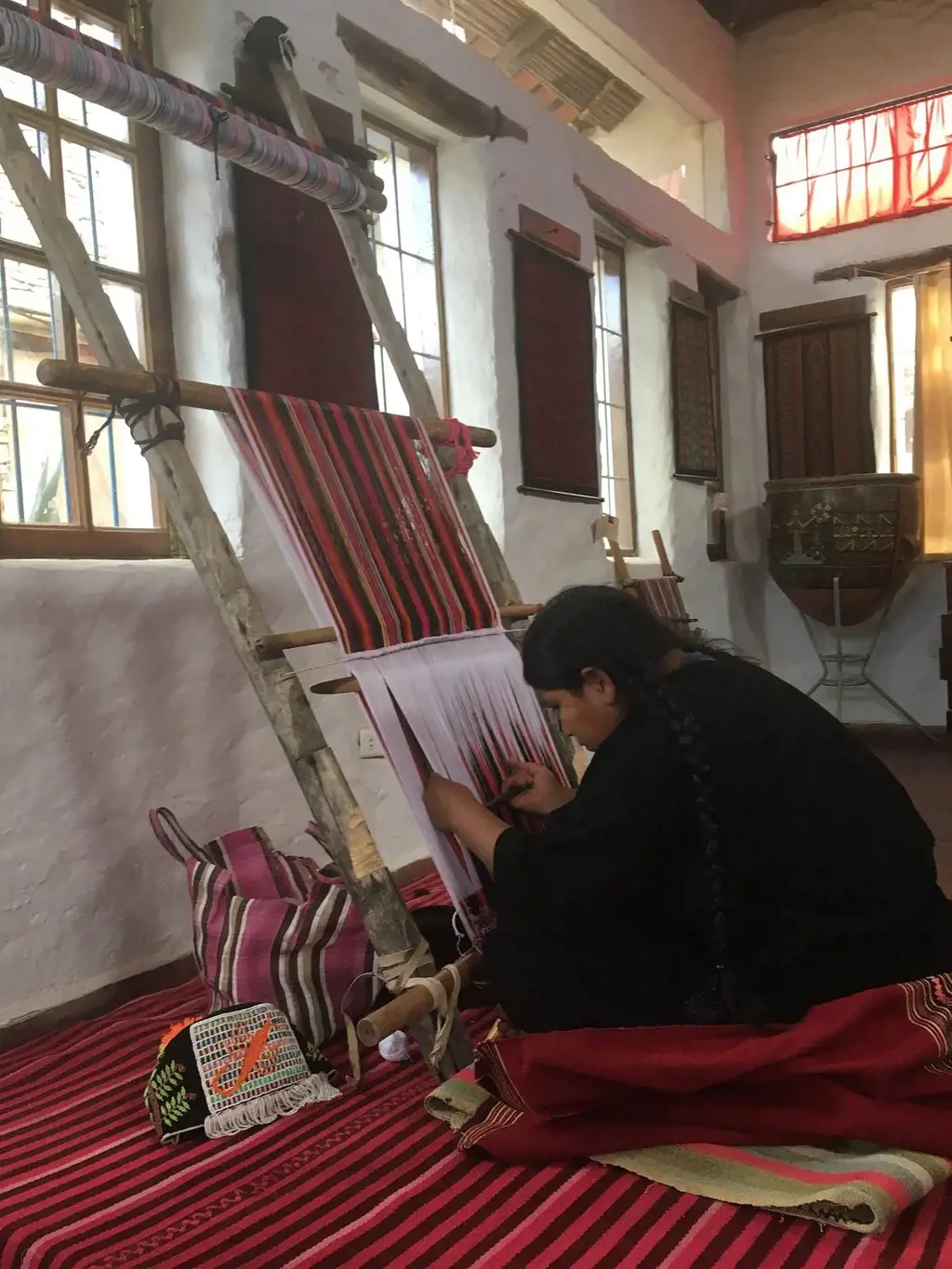
| Characteristic | Description |
|---|---|
| Name | Museo de Arte Indígena |
| Type | Art museum in Sucre, Bolivia |
| Rating / Review count | 4.6 / 240 |
| Address | Hotel Kolping, Pasaje Iturricha 314, Zona La Recoleta (frente a, Sucre, Bolivia |
| Phone | +591 4 6456651 |
| Hours | Sunday - Closed Monday - 9 AM–12:30 PM, 2:30–6 PM Tuesday - 9 AM–12:30 PM, 2:30–6 PM Wednesday - 9 AM–12:30 PM, 2:30–6 PM Thursday - 9 AM–12:30 PM, 2:30–6 PM Friday - 9 AM–12:30 PM, 2:30–6 PM Saturday - 9 AM–12 PM, 2:30–6 PM |
| Profiles |  |
The Textile Museum ASUR in Sucre, Bolivia is a captivating destination for anyone interested in the rich textile traditions of the region. Located in the heart of Sucre, the museum showcases a stunning collection of textile artifacts that represent the indigenous cultures of Bolivia.
The museum is dedicated to preserving and promoting the indigenous textile heritage of the region. It houses a wide variety of textile artifacts, including intricately woven textiles, vibrant traditional costumes, and unique embroidery pieces. Visitors can explore the different galleries and learn about the significance of these textiles in the lives of the indigenous communities.
One of the highlights of the Textile Museum ASUR is its collection of traditional weaving looms. These looms provide a glimpse into the ancient weaving techniques that have been passed down through generations. Visitors can witness skilled weavers in action as they create stunning textiles using these traditional methods.
The museum also offers workshops and demonstrations for those interested in learning more about Bolivian textiles. Visitors can participate in hands-on activities and learn basic weaving techniques from experienced artisans. These workshops provide a unique opportunity to gain insight into the labor-intensive process of creating these intricate textiles.
In addition to its permanent collection, the Textile Museum ASUR hosts temporary exhibitions that showcase contemporary textile art and design. These exhibitions highlight the evolution and innovation in Bolivian textile traditions, showcasing the talent and creativity of local artists.
The Textile Museum ASUR is not just a place to admire beautiful textiles. It also serves as a research center, conducting studies on traditional textile production methods and supporting local artisans. The museum works closely with indigenous communities to promote the sustainability of their textile practices and preserve their cultural heritage.
A visit to the Textile Museum ASUR is a truly enriching experience. It allows visitors to appreciate the skill and artistry that goes into creating these exquisite textiles while learning about the cultural significance they hold for the indigenous communities of Bolivia. Whether you are a textile enthusiast or simply curious about Bolivian culture, a visit to this museum is sure to leave a lasting impression.
12 Fun Ways to Enjoy Cleveland in December
You may want to see also

Paleontology Museum and Laboratory Cal Orck'o

The Paleontology Museum and Laboratory Cal Orcko is a remarkable attraction in Sucre, Bolivia. Situated in the heart of the country, this museum holds a vast collection of fossils, offering visitors a unique opportunity to delve into the prehistoric history of the region.
In Sucre, there is no better place to learn about the incredible creatures that once inhabited the earth than the Paleontology Museum and Laboratory Cal Orcko. The museum is located on the site of a former cement quarry known as Cal Orcko, which is famous for its abundance of dinosaur footprints. These footprints date back a staggering 68 million years and provide a tangible connection to the ancient world.
The museum is divided into several sections, each showcasing different aspects of paleontology. One of the highlights is the gallery of dinosaur fossils, where visitors can marvel at the remains of these enormous creatures. The collection includes complete skeletons as well as individual bones, giving visitors a comprehensive view of the dinosaurs that once roamed the area.
Another notable section of the museum is the laboratory, where ongoing research and preservation efforts take place. Visitors can observe scientists and paleontologists at work, uncovering new fossils and studying existing ones. This behind-the-scenes experience offers a unique insight into the process of paleontological discovery.
In addition to the dinosaur fossils, the museum also exhibits other prehistoric animals that lived in the region. This includes ancient mammals, reptiles, and even marine creatures. The diverse range of fossils on display provides a comprehensive overview of the different life forms that existed in Bolivia millions of years ago.
To enhance the visitor experience, the museum offers guided tours led by knowledgeable guides who explain the significance of each exhibit. The guides are passionate about the subject matter and are eager to share their knowledge with visitors. They provide fascinating insights into the paleontological history of the area and are always available to answer questions.
The Paleontology Museum and Laboratory Cal Orcko is not only a place of education and discovery but also a center of research and conservation. The museum actively engages in scientific research and plays a vital role in the preservation of the region's paleontological heritage. By supporting the museum, visitors contribute to the ongoing efforts to understand and protect Bolivia's rich paleontological history.
Visiting the Paleontology Museum and Laboratory Cal Orcko is a truly unique experience that allows visitors to step back in time and explore the ancient world. It is a must-visit for anyone interested in paleontology, natural history, or simply curious about the dinosaurs that once roamed the earth. The museum provides a fascinating glimpse into the past and offers an opportunity to connect with the incredible diversity of life that existed millions of years ago in Sucre, Bolivia.
12 Must-Do Activities in Warren County NJ
You may want to see also
Frequently asked questions
Some popular attractions in Sucre include the Sucre Cathedral, the Sucre Central Market, and the Parque Cretácico (Dinosaur Park). The city's historic center, with its beautiful colonial architecture, is also a popular place to explore.
Yes, there are several outdoor activities to enjoy in Sucre. You can go hiking in the nearby Tarabuco region, visit the Maragua Crater, or take a guided tour to the nearby Potosi mines. There are also opportunities for biking, horseback riding, and paragliding in the surrounding countryside.
Sucre is known for its rich cultural heritage. Visitors can explore the many museums, such as the Museo de Arte Indígena (Museum of Indigenous Art) and the Casa de la Libertad (House of Liberty), which played a significant role in Bolivia's independence. Additionally, you can learn about traditional weaving techniques at the Parque Cretácico and immerse yourself in the local culture by attending festivals and events such as the Festival Internacional de la Cultura.



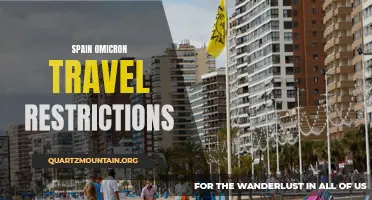
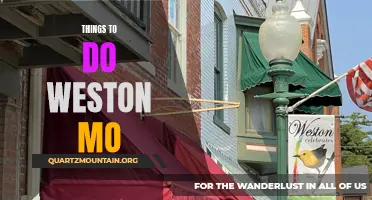
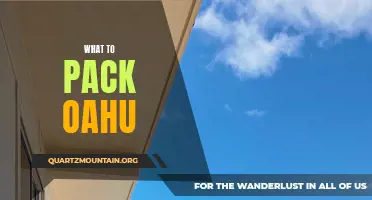


5 Comments
Brooke Mcpherson
Guilia Velez
AuthorWojciech Peck
Saffron Sullivan
Kryms Kaya
Author